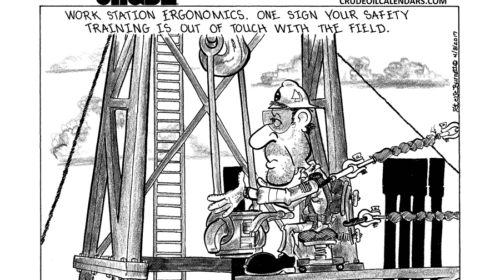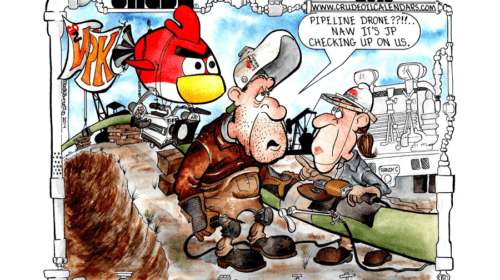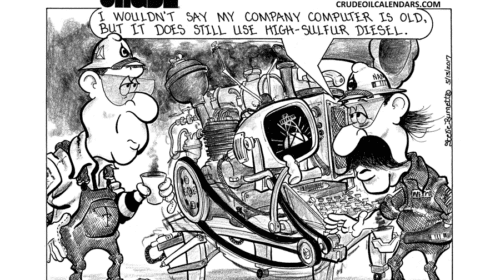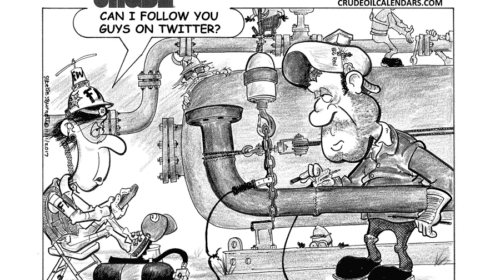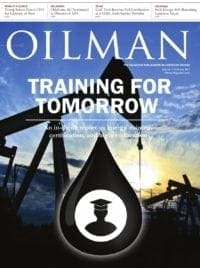Do not mistake a safety program for a training program.
The petroleum industry has made great strides in developing safety programs since the 1970s. One of the greatest improvements is the industry’s recognition of the field employees as experts and realizing in order to develop a functional safety culture the company has to respectfully seek guidance from the field specialist. In the 1970s, when companies were developing safety programs, they recruited degreed safety experts. These educated safety experts would come to the field locations to train field employees on safety procedures.
Field employees found it difficult to develop any type of respect-based working relationships with these safety experts since they were not part of the field employee’s culture and had no idea on how equipment or procedures worked. Without a mutual respect-based relationship, the culture of safety only existed within the confines of the priorities of the field hands.
Today petroleum companies are making great strides in developing a culture of safety through respect-based safety programs. However, even with these great strides in safety, the U.S. Bureau of Labor Statistics confirms that during the recent boom the rate of fatalities in the oil and gas industry increased significantly along with the boom. A great safety program needs to be supported with a training program to decrease the high accident rates. History has demonstrated in both the boom of the 1970s and the recent boom that ended in 2014, that you cannot reduce fatality rates by relying on safety programs alone.
Safety v. Training
A safety program and a training program are not the same thing. Although they are both focused on the same goals, the training program enforces the safety program by developing skills and knowledge that allow the new employee, or career transitioning employee, to operate in a safety culture in the field. A safety program will certify employees on the theories of working safely, the use of PPE and safety procedures with tools.
A training program develops skills and knowledge with the use of tools, trouble shooting skills by hands-on focus on repairing equipment and develops the culture of safety by imparting knowledge and skills on how to operate safely around dangerous pressurized hydrocarbons. A safety program does not establish a culture of safety by developing a habit of safe procedures. Safety training programs do not address any operational procedures, equipment, or tools, which is basic knowledge and skills required of the field level employee to work safely.
The petroleum industry is facing a workforce crisis that will require a large influx of new employees just to keep production levels current to meet market demands. The “Great Crew Change” means the petroleum industry will lose close to 700,000 employees due to retirement over the next 5-7 years.
“The current petroleum market downturn will have virtually no impact on the Great Crew Change, which is coming whether oil is booming at $100 a barrel or moving along at $45 a barrel.” (2015, Birenhaum, Kate)
These are the field level experts with an average of 20 years of hands-on field experience. Just to keep production at its current level to meet market demands that means the industry will have to hire 100,000-140,000 employees a year to replace the Baby Boomers lost to retirement.
It is more critical today than ever before that petroleum companies establish a training program, primarily due to the skills the new workforce brings to the career. Each generation brings a different set of skills to the job, simply due to the culture in which they were raised. Baby Boomers were raised using hand tools, and are much more proficient at problem solving and repairing equipment. Gen Xers and Millennials are much more proficient in high-tech applications, and have no experience in using tools or repairing equipment. And since most high schools do not offer workforce trade classes anymore, Gen Xers and Millennials do not have any opportunities to develop skills with tools.
A good training program will include oilfield equipment to utilize in hands-on training. New employees need to be skilled professionals with confidence and skills in trouble shooting real oilfield equipment, experience using tools, repairing and completing maintenance on real oilfield equipment.
I recommend a standard set of skills and knowledge that every oilfield employee must acquire before they can work at any level in the petroleum industry. For example, if your HR department has an understanding of hydrocarbon processing and how to repair and maintain equipment, they will have a much better understanding of the skills and knowledge needed for new employees.
A few of the recommended skills would include:
- Take for granted everything is pressurized and work accordingly (for example, never stand in front of any flange or opening while working on equipment, and never take all the bolts completely off before breaking a seal)
- Never put a tool on anything pressurized
- Always use two sources to bleed pressure off equipment
- Use basic troubleshooting skills based on knowledge and hands-on experience repairing and maintaining process equipment, including all control and safety valves, separators, and pumps – verify possible solutions by eliminating easy solutions to hard solutions
- Have the knowledge to know when you arrive on location, through visual observation of equipment, what the pressure rating of the processes are
- Know how hydrocarbon process equipment works and have the skills to trace the flow to gain knowledge of how individual process equipment operates
- Understand the importance of the history of equipment to apply trouble shooting theories
These are just a few of the basic knowledge and skills that all employees in all phases of the petroleum industry need to perform in a culture of safety.
The required skill level should use other professional industries as a model of operations. For example, a professional welder requires a level of professional skills and must pass a hands-on certification test to demonstrate skills. The petroleum industry worker also needs a level of professional skills and should be required to demonstrate a standard level of skills through a hands-on certification test. Field level operations in the petroleum industry require employees that are confident, skilled, knowledgeable, and capable of using tools and equipment to solve problems on the location.
Here are a few things to keep in mind while developing your training labs:
- The training equipment needs to be real oilfield equipment
- The training equipment does not need to be operational nor pressurized
- Skills are developed through troubleshooting scenarios on the equipment
To add the danger of using operational equipment takes away the learning process of being able to make mistakes without consequences. It does not have to be all the equipment the employee will work around, but enough equipment to develop troubleshooting skills and practice with tools.
A lot of training facilities use equipment models. These models seldom resemble the actual field level equipment and add the task of the employee being trained to have to translate the training equipment to field level equipment when they go to work in the field. I would equate this to training the individuals in one language and expecting them to work in operations using a different language. It is simply adding an unnecessary burden on the new employee.
I would also be very cautious utilizing online training. While online classes are efficient and cost-effective, they do not support the development of skills. There are a few subjects the new employee can learn online, but keep in mind the employee’s career will require them to work in hands-on operations in the field. I equate it to teaching welding online. Companies would not hire a welder that only had online training.
It is critical that the trainer has extensive field experience. I would recommend use some of these retiring baby boomers that have 20 years of experience. In my previous training position, I worked with petroleum engineers that had no field experience and educators that never worked in the oilfield. They simply could not teach the hands-on portion of the training. Again I would refer to the welding example. Would you use a trainer who had never welded to instruct a welding class?
The petroleum industry seems to believe that on-the-job training will upgrade the new employees’ skill sets adequately. However U.S. Bureau of Labor Statistics on the oil and gas industry do not support this theory. My experiences in the petroleum industry does not support this theory either. I have witnessed too many men die needlessly simply due to the fact they had no experience in what they were doing or their on-the-job training was inadequate. It is time for the petroleum industry to reconsider outdated theories on employee training and develop a model for improving efficiency and reducing accidents.
If anybody has any questions or comments, I would be glad to hear them. steveab62@yahoo.com

Steve Burnett has been working in the oil industry since the age of 16. He started out working construction on a pipeline crew and after retirement, finishes his career as a Pipeline Safety Compliance Inspector. He has a degree in art and watched oil and art collide in his career to form the “Crude Oil Calendars.” He also taught in the same two fields and believes that while technology has advanced, the valuable people at the core of the industry and the attributes they encompass, remain the same. With a humorist for a father, he also learned that a dose of comedy makes everything better. The major influences on his cartooning style were the Ace Reid Cowpokes cartoons, the Dirk West sports cartoons and V.T. Hamlin's Alley Oop comic.



